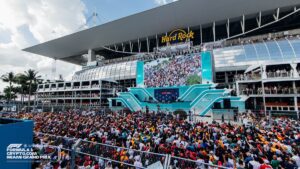
Finally back to the home office after a wonderful tour of the Eastern Caribbean Islands we are greeted by the excitement of Formula One Racing arriving in Miami the weekend of May 5th to May 7th. When I had the career as an Automotive Dealership General Manager, I luckily had the opportunity to visit Monaco for Formula One Races, but now that I’m sort of retired, I get to see this exciting race event right in my own backyard in Miami. With the venue a short distance from both our apartment in Brickell or even shorter ride from our airplane hangar in Pembroke Pines, there is no way to ignore the excitement that is building in our neck of the woods. I thought it might be a good topic to cover this week and next as we near the race event weekend. This week I will cover the origins of the race, the path to becoming a Formula One driver, and the salary potentials. Feel free to comment if I miss anything or my my research or knowledge is not correct. Next week I will add more about this year’s event and some of the drama that unfolded in F1 earlier this year.
Formula One Racing – The Origin
Formula One (F1) is the highest class of single-seater auto racing and has its origins in the European Grand Prix motor racing of the 1920s and 1930s. However, the modern Formula One World Championship as we know it today began in 1950. Before the establishment of the Formula One World Championship, there were various Grand Prix races held across Europe, with many countries organizing their own events. These races featured a mix of professional and amateur drivers, using a range of different car specifications. The term “formula” referred to the set of rules that all participants’ cars had to adhere to. In the late 1940s, the Fédération Internationale de l’Automobile (FIA) decided to create a unified set of rules for these races and establish an official championship to determine the best driver and team each year. The first Formula One World Championship race took place at Silverstone, United Kingdom, on May 13, 1950. It was won by Giuseppe Farina, driving for the Alfa Romeo team. Over the years, Formula One has evolved significantly in terms of technology, regulations, and team structures. While the core principle of the sport remains the same – racing open-wheel single-seater cars on closed circuits – the details have changed dramatically. Today, Formula One is a global phenomenon, with races held on multiple continents and featuring some of the most technologically advanced racing cars in the world.
Humble Beginnings of a Formula One Driver
Becoming a Formula One race car driver involves a combination of talent, dedication, and strategic career planning. Here are the general steps one might follow on the path to becoming an F1 driver:
- Start karting at a young age: Most professional race car drivers start their careers in karting. This helps to develop essential driving skills and build a strong foundation in racing. It’s common for drivers to begin karting as early as 6-8 years old.
- Progress through the ranks: After gaining experience in karting, move on to more advanced single-seater categories like Formula 4, Formula 3, or regional equivalents. These series provide a more structured environment to develop racing skills and compete against other talented drivers.
- Build a racing resume: Success in junior racing categories is crucial to attract the attention of sponsors, teams, and talent scouts. Winning championships and demonstrating consistent performance will help build a solid racing resume.
- Obtain a Super License: To participate in Formula One, a driver needs to acquire an FIA Super License. This requires accumulating a certain number of points in junior categories over a three-year period, as well as passing a mandatory test on F1 sporting regulations.
- Networking and sponsorship: Building relationships with key stakeholders, such as team managers, engineers, and sponsors, is essential. Developing a strong network can help create opportunities for further advancement and financial backing.
- Join a driver development program: Many F1 teams have driver development or junior programs aimed at nurturing young talents. Being part of such a program can provide access to resources, mentorship, and a clear path toward a potential F1 seat.
- Gain experience as a test or reserve driver: Before getting a full-time F1 race seat, many drivers serve as test or reserve drivers for F1 teams. This role allows them to familiarize themselves with the team, car, and technology, as well as showcase their skills and potential.
- Secure an F1 race seat: Finally, with the right combination of skill, experience, networking, and opportunity, a driver might secure a race seat in an F1 team. However, competition is fierce, and only a few drivers manage to make it to this level.
Remember that the path to becoming an F1 driver can be long and challenging, and there are no guarantees of success. It requires exceptional skill, hard work, dedication, and perseverance to make it to the pinnacle of motorsport.
Multi-Million Dollar Career – Formula 1 Driver Salaries
The salaries of Formula 1 drivers can vary significantly depending on factors such as their experience, reputation, and the team they are driving for. While some drivers may earn modest salaries, others can make millions of dollars per year. Here’s a rough breakdown of the salary range for F1 drivers:
- Top-tier drivers: The highest-paid F1 drivers can earn between $30 million and $55 million per year, including bonuses and endorsements. These drivers are usually multiple-time world champions or have a strong track record of success, driving for top teams like Mercedes, Ferrari, or Red Bull.
- Mid-tier drivers: Experienced drivers who have proven their talent but may not be consistent race winners can earn between $5 million and $15 million per year. These drivers usually drive for teams with competitive cars but not necessarily championship contenders.
- Lower-tier drivers: These drivers typically race for teams with smaller budgets or those struggling to be competitive. Their salaries can range from $500,000 to $3 million per year. In some cases, drivers in this category may bring sponsorship money to the team, which could help offset their salary.
- Rookie or development drivers: Drivers who are just entering F1 or serving as reserve or test drivers may have more modest salaries, ranging from $150,000 to $1 million per year. These drivers often focus on gaining experience and proving themselves to secure better contracts in the future.
It’s important to note that these figures are approximate and can vary from year to year or even within a season. Additionally, drivers may earn extra income from personal sponsorships, endorsements, or other commercial arrangements outside of their team contracts. We will take a closer week at the teams for the event and the F1 drama leading up to it, so for now remember to Be Social, Fly Private!
For ticket and event info visit our events page Miami Grand Prix
For Private Jet Travel to or from the event contact us at Emptylegs Jet Travel

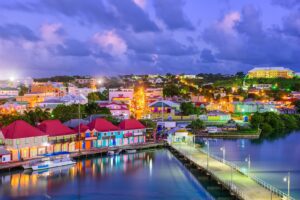
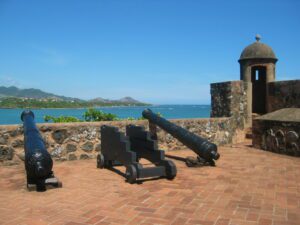 Tomorrow is our first stop on our 10-day Eastern Caribbean cruise, the beautiful city of Puerto Plata in the Dominican Republic. Located on the northern coast of the island, Puerto Plata is known for its stunning beaches, vibrant culture, and rich history. When we arrive at port, we will be greeted by the warm sun, crystal-clear waters, and the lively rhythms of merengue music. I’m sure it will be an unforgettable experience. One of the highlights of our visit will be to explore the historic Fort San Felipe, which was built in the 16th century to protect the city from pirates and foreign invaders. The fort is now a museum, where we will learn about the history of the island and its many battles.
Tomorrow is our first stop on our 10-day Eastern Caribbean cruise, the beautiful city of Puerto Plata in the Dominican Republic. Located on the northern coast of the island, Puerto Plata is known for its stunning beaches, vibrant culture, and rich history. When we arrive at port, we will be greeted by the warm sun, crystal-clear waters, and the lively rhythms of merengue music. I’m sure it will be an unforgettable experience. One of the highlights of our visit will be to explore the historic Fort San Felipe, which was built in the 16th century to protect the city from pirates and foreign invaders. The fort is now a museum, where we will learn about the history of the island and its many battles.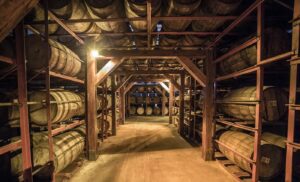 The final stop will be the Ron Macorix Factory just in case we need something to go along with the Cigars and the Chocolate. The factory is dedicated to producing high-quality, premium rum using traditional methods and locally sourced ingredients. We will take a guided tour of the facility, which includes a walk through the rum-making process. The tour begins with an introduction to the history of rum and the origins of sugar cane, the key ingredient used in rum production. We can then observe the various stages of rum production, from the fermentation and distillation of the sugar cane juice to the aging and blending of the finished product. We will get the chance to taste the different types of rum produced at the factory, including dark and light rum, as well as flavored varieties. I think you can also sample a variety of rum-based cocktails made on-site, using the factory’s premium rum as a base. The Ron Macorix Factory also offers workshops where visitors can learn to make their own rum cocktails and traditional Dominican dishes, under the guidance of experienced chefs and bartenders.
The final stop will be the Ron Macorix Factory just in case we need something to go along with the Cigars and the Chocolate. The factory is dedicated to producing high-quality, premium rum using traditional methods and locally sourced ingredients. We will take a guided tour of the facility, which includes a walk through the rum-making process. The tour begins with an introduction to the history of rum and the origins of sugar cane, the key ingredient used in rum production. We can then observe the various stages of rum production, from the fermentation and distillation of the sugar cane juice to the aging and blending of the finished product. We will get the chance to taste the different types of rum produced at the factory, including dark and light rum, as well as flavored varieties. I think you can also sample a variety of rum-based cocktails made on-site, using the factory’s premium rum as a base. The Ron Macorix Factory also offers workshops where visitors can learn to make their own rum cocktails and traditional Dominican dishes, under the guidance of experienced chefs and bartenders. 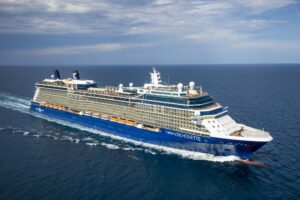 Planning a Strategic Retreat in today’s fast-paced business world means taking a break from the daily grind to recharge and refocus. Many successful entrepreneurs and business owners find that stepping away from their work for a short period of time can actually increase their productivity and creativity. In fact, taking a vacation or planning a strategic retreat can be a smart business move. In this case, Katie and I have decided to take a 10-day Eastern Caribbean cruise to not only relax and recharge, but also to do some strategic business planning for our next ventures. Of course, the rest of the Emptylegs team will be available for any air charter needs or request while we travel. At first we considered an Eastern Caribbean island hopping yacht charter, but we sailed last year on the Celebrity Summit, and we remembered what a great trip we had during my birthday celebration. We searched and found a great cruise on the only Cruise Line we will sail, Celebrity Cruises, and decided to add more points to our Captains Club balance booking the trip. We chose the 10 day Eastern Caribbean Cruise aboard the Celebrity Silhouette because it includes some of our favorite private jet travel islands, which will allow us to mix business with pleasure.
Planning a Strategic Retreat in today’s fast-paced business world means taking a break from the daily grind to recharge and refocus. Many successful entrepreneurs and business owners find that stepping away from their work for a short period of time can actually increase their productivity and creativity. In fact, taking a vacation or planning a strategic retreat can be a smart business move. In this case, Katie and I have decided to take a 10-day Eastern Caribbean cruise to not only relax and recharge, but also to do some strategic business planning for our next ventures. Of course, the rest of the Emptylegs team will be available for any air charter needs or request while we travel. At first we considered an Eastern Caribbean island hopping yacht charter, but we sailed last year on the Celebrity Summit, and we remembered what a great trip we had during my birthday celebration. We searched and found a great cruise on the only Cruise Line we will sail, Celebrity Cruises, and decided to add more points to our Captains Club balance booking the trip. We chose the 10 day Eastern Caribbean Cruise aboard the Celebrity Silhouette because it includes some of our favorite private jet travel islands, which will allow us to mix business with pleasure.